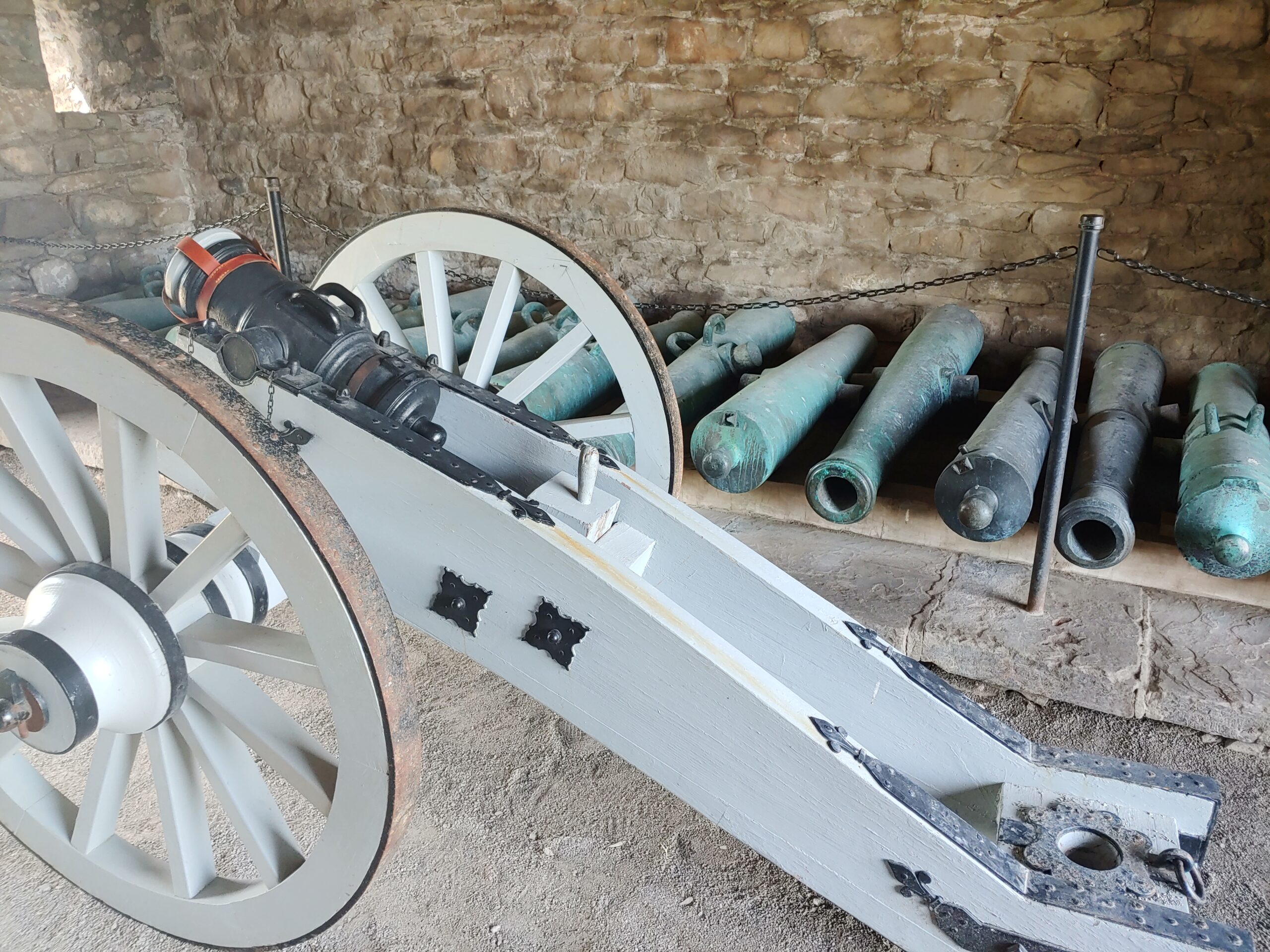Fort Niagara State Park is a captivating blend of history and natural beauty nestled at the confluence of the Niagara River and Lake Ontario in the state of New York, USA. This exceptional destination is renowned for its multifaceted appeal, offering visitors a multifarious experience that spans centuries and embraces the breathtaking environment surrounding it. From Fort Niagara State Park, you can see Toronto, Canada, across Lake Ontario on a clear day. The park is located at the mouth of the Niagara River, and its strategic location provides scenic views of the lake and the Canadian shoreline. Toronto, with its iconic skyline, is approximately 30 miles (48 kilometers) north of Fort Niagara. The visibility of Toronto from the park will depend on weather conditions and atmospheric clarity, but on a clear day, you can indeed catch glimpses of the city across the lake.

Historical Significance: In the late 17th century, French explorers strategically positioned Fort Niagara at the confluence of the Niagara River and Lake Ontario. They originally erected a wooden fort, known as Fort Conti, at this vital location in 1678. Later, in 1726, they undertook a significant upgrade, replacing the wooden structure with a robust stone fort, renaming it Fort Niagara. The stone used in the construction of Fort Niagara was sourced locally from quarries in the surrounding area. The fort is situated near the shores of Lake Ontario and the Niagara River, both of which have rocky terrain nearby. These natural geological features provided a ready source of stone for the fort’s construction. Quarries would have been established in the vicinity of the fort to extract the necessary building materials. The stone was then likely cut, shaped, and transported to the construction site for use in building the fort’s walls, bastions, and structures.

Using locally sourced stone was a practical choice, as it reduced the cost and effort required for transportation and ensured that the fort could be constructed with readily available materials. This approach was common in historical construction projects where natural resources were abundant in the vicinity. The stone fortifications included thick stone walls, bastions, and various buildings within the fort complex. These materials were chosen for their durability and defensive capabilities, ensuring that the fort could withstand attacks and provide a stronghold for its occupants during times of conflict. The stone construction contributed to the fort’s resilience and its ability to endure for centuries, making it a significant historical landmark today.

Through a series of conflicts, including the French and Indian War, the British gained control of Fort Niagara in 1759. They recognized its significance and continued to fortify and expand the site, making it one of the most substantial military installations in North America during their rule. It served as a base for British operations and as a hub for trade with indigenous peoples and fur traders.
American forces captured Fort Niagara during the American Revolution in 1778, causing it to change hands once more. It remained in American control until the Jay Treaty of 1796, which required the U.S. to surrender the fort to British forces. It was not until the outbreak of the War of 1812 that Fort Niagara returned to American hands. During this conflict, the fort played a critical role in defending the American frontier against British and Indigenous forces.
A Living Museum: Today, Fort Niagara stands as a living museum, inviting visitors to embark on a captivating journey back in time. The fort’s well-preserved structures, such as the barracks where soldiers lived, the powder magazines storing ammunition, and the officer’s quarters exuding an air of authority, collectively form a tangible link to the colonial era. As one traverses the fort’s stone walls and ascends its mighty ramparts, a vivid tapestry of history unfolds before their eyes. Imagination takes flight as visitors can envision the bustling daily life of soldiers diligently manning their posts, officers strategizing for the future, and settlers forging a life in this historic stronghold. Every corner of Fort Niagara resonates with stories of valor, hardship, and the relentless spirit that defined an era long past, ensuring that the past is not merely remembered but lived and experienced

Historical Reenactments: Fort Niagara is renowned for its historical reenactments, where costumed interpreters bring history to life. These reenactments include demonstrations of period weaponry, military drills, and daily tasks. They offer a dynamic and immersive experience that transports visitors back in time, helping them understand the challenges and triumphs of those who lived in this era.
Interactive Historical Interpretation:
Visitors to Fort Niagara State Park can immerse themselves in history through interactive exhibits, guided tours, and reenactments. Costumed interpreters breathe life into the past, offering insights into the daily lives of soldiers and settlers who once called this place home. The echoing sounds of musket and cannon fire during historical reenactments serve as a vivid reminder of the turbulent times that unfolded here.

Beyond the historical allure, Fort Niagara State Park boasts an astonishing diversity of natural landscapes. As you venture deeper into the park, you will find yourself enveloped by lush woodlands, each season painting its own unique masterpiece. In spring, wildflowers carpet the forest floor, while the vibrant hues of autumn foliage create a breathtaking spectacle. These woodlands provide a haven for local wildlife, including deer, squirrels, and a variety of bird species, making it a perfect spot for nature enthusiasts and photographers alike. Sprawling open meadows within the park beckon visitors to unwind and savor the tranquility of the surroundings. These expanses offer ample space for picnicking, sunbathing, or simply lounging with a good book. The scent of wildflowers fills the air during the warmer months, and families often spread out picnic blankets to enjoy meals amidst nature’s grandeur. It is a place where you can bond with loved ones, take in the fresh air, and create cherished memories.
Serene Hiking Trails: Fort Niagara State Park boasts a network of serene hiking trails that wind their way through its various ecosystems. Whether you are an avid hiker or a casual stroller, there’s a trail for every level of outdoor enthusiast. These paths lead you on an adventure through the park’s woodlands, offering glimpses of wildlife and the soothing sounds of rustling leaves and birdsong. You may also encounter interpretive signs highlighting the park’s flora and fauna, adding an educational aspect to your outdoor experience.
Lake Ontario’s Tranquil Shoreline: Perhaps one of the most captivating features of the park is its shoreline along Lake Ontario. The lake’s crystal-clear waters gently lap against the shore, creating a serene and calming atmosphere.

The expansive views of the lake, often extending to the horizon, are a sight to behold, especially during sunrise and sunset. The shoreline provides an ideal setting for leisurely strolls along the water’s edge, with the soft sands beneath your feet and the sound of the waves providing a soothing backdrop.

Fort Niagara State Park harmoniously intertwines the rich tapestry of history with the natural splendor of the Niagara region, offering visitors an immersive journey through time and place. The formidable fort, with its centuries-old stone structures, brings history to life, fostering a profound understanding of the challenges and triumphs of those who once inhabited its walls. Amidst lush woodlands, tranquil lakeshore, and open meadows, the park serves as a sanctuary for contemplation and renewal, nurturing the spirit and inspiring deep appreciation for both the enduring legacy of Fort Niagara and the captivating forces of nature that continue to shape this remarkable destination. It is a place of reflection and connection, where visitors leave not only educated but with their hearts touched by the interplay of human history and the timeless beauty that surrounds them.






